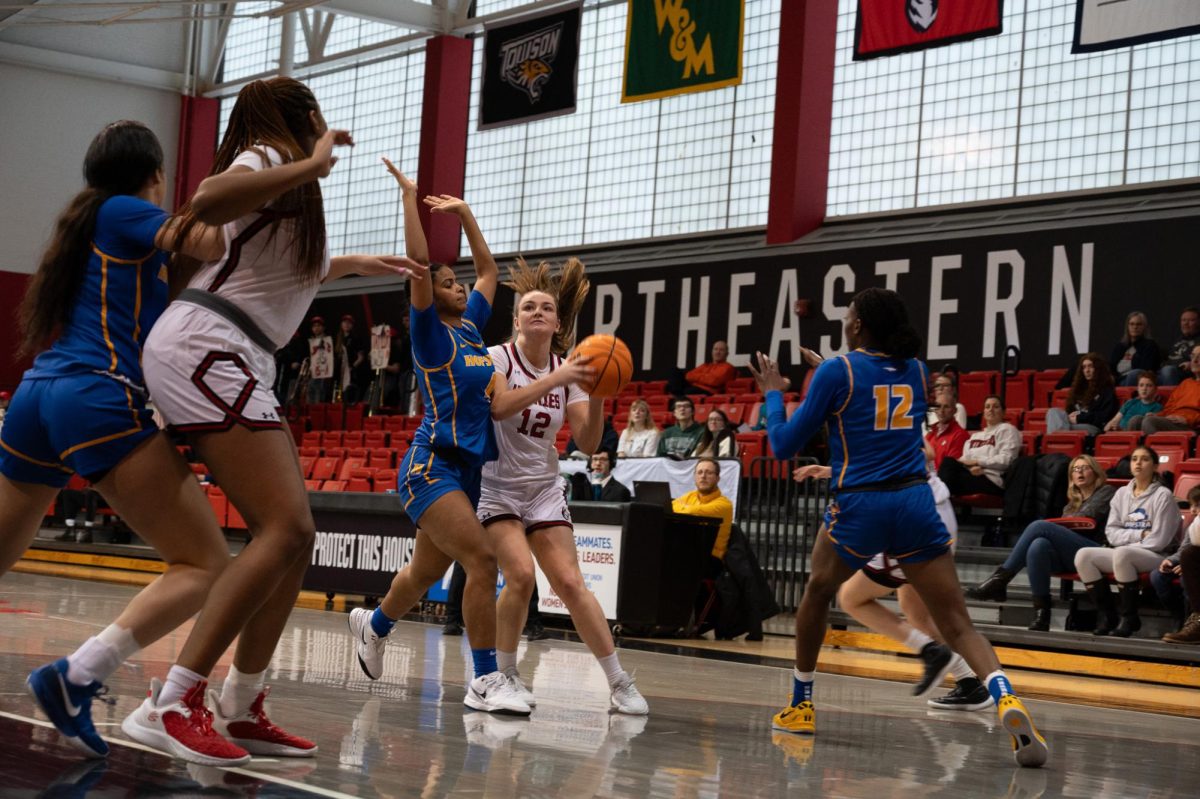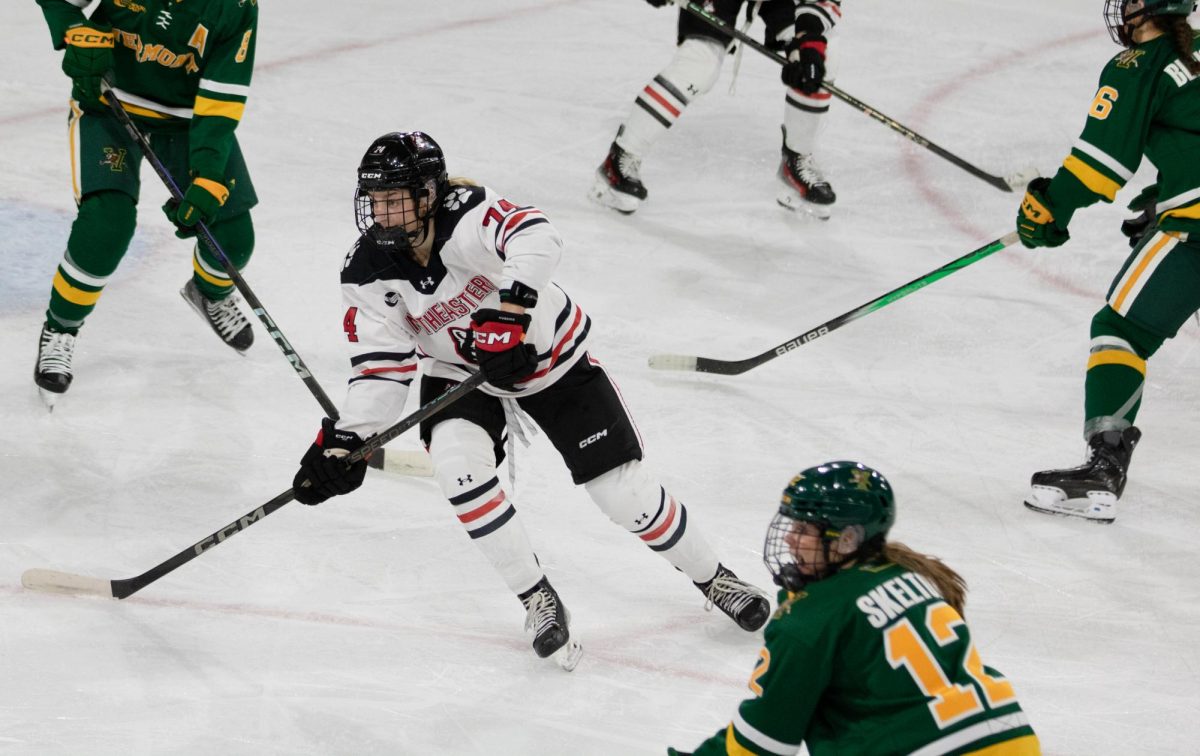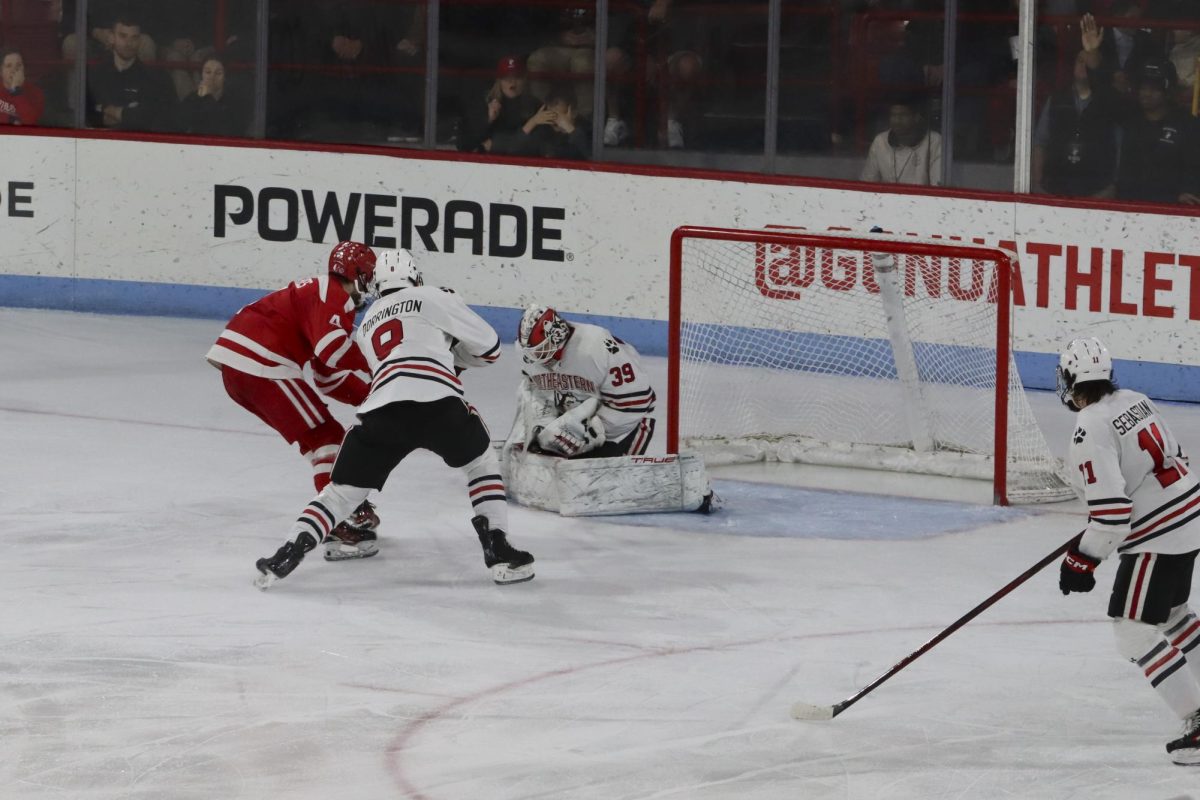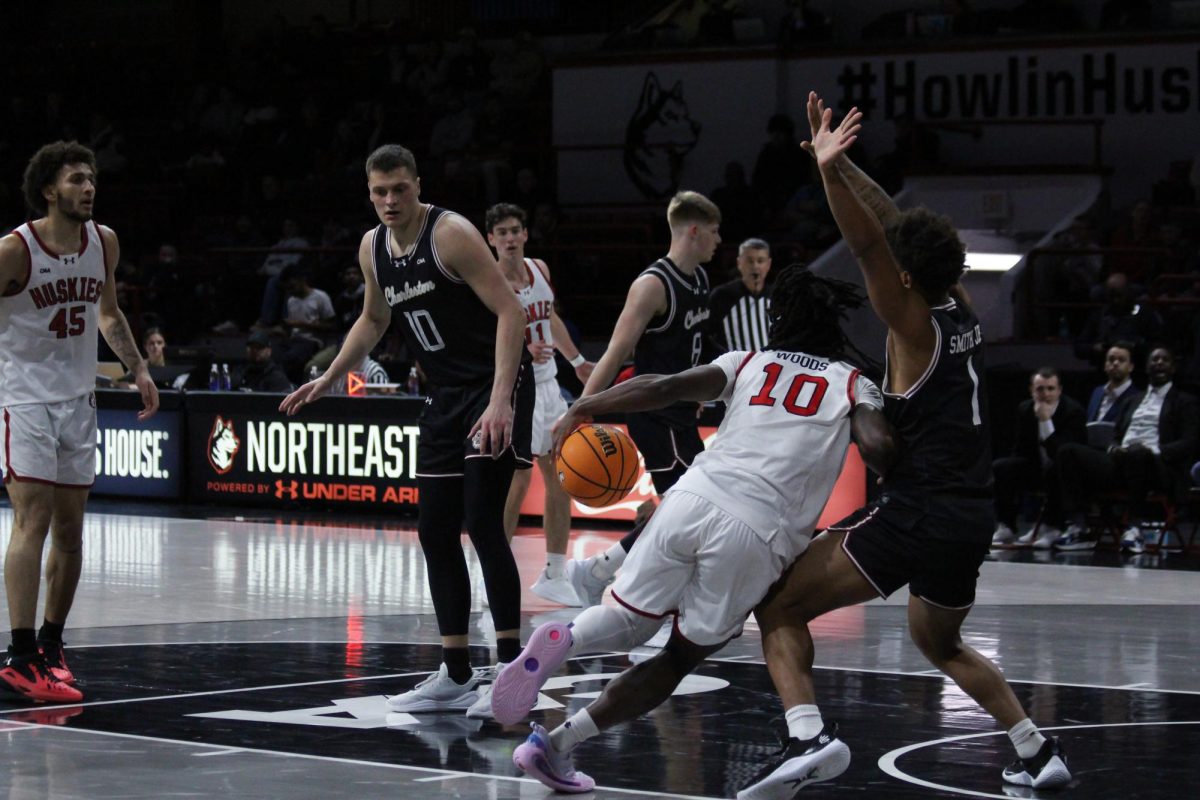For the first time in my two-and-a-half year tenure at Northeastern I went to a women’s hockey game two weeks ago, partially because I was asked to write a column about women’s sports, but more so because I wanted to see what a top ranked NCAA Division I team looked like in action. They lived up to my every expectation. The game wasn’t much of a game at all. The USCHO then-No. 7 ranked Huskies demolished University of New Hampshire in front of a record attendance crowd and made history as the first women’s college hockey game broadcast on an ESPN network.
The “record attendance” for this momentous occasion? Just 1,227 fans, less than half the average attendance at Matthews for a men’s game this season. It’s unfortunate that the student body couldn’t be drawn in by the online broadcast, or the Beanpot ticket vouchers, or that they were handing out free t-shirts at the game, or the fact that this was a proud moment for a strong program on the rise.
Despite their (much higher) ranking, the women’s team continues to play second fiddle to the men. Obviously this plight isn’t unique to the NU women’s hockey team. Even the dynastic UConn women’s basketball team find itself playing in an arena with open seats.
Women’s sports have the stigma of being cleanly played and defense-oriented. While extremely talented players can take over a game (like Phoenix guard/forward Diana Taurasi and Los Angeles Sparks, forward Candice Parker, both of the WNBA) wins are often seen as the product of the team working as a system rather than the singular efforts of an extraordinary individual. The average viewer equates this style of play to a pitcher’s duel or a clock management-centric defensive struggle in football. It wins games, but it isn’t sexy.
With this perspective in mind, let’s take a look at a widely successful men’s league. List some NBA teams that play the most fundamental, make the extra pass, defensively sound basketball, who makes the cut? Common guesses included the Celtics, Bulls, Lakers, certainly the Spurs led by power forward and center Mr. Tim “I call bank shot” Duncan. A team with this style that didn’t play in a major market might struggle with ratings, right? Wrong. Over the course of last season, the Spurs posted the highest Nielsen ratings for their regional market of all NBA teams. In fact, at 10.19, they more than doubled the regional ratings of major market powerhouse teams: The Heat (4.94), Lakers (4.79) and Celtics (4.73). The Spurs ranked fifth in overall average viewership, behind, the Lakers, Bulls, Knicks, and Celtics. My point is that on the professional men’s level, between the dunks, alley-oops and ankle-breaking cross-overs, the fundamental approach is appreciated, perhaps more than people realize. So people should stop using it as an excuse not to watch women’s sports.
Maybe this thought process is too narrow in scope. Perhaps some women’s teams lack the same following as men’s because of the relative infancy of women’s athletics programs. After all, the NU men’s hockey program has existed since 1929, while the women’s program began in 1980. While 31 years may seem like long enough to right the inequality, sports fans are, if nothing else, nostalgic and loyal.
Another consideration, and this is just a thought, is that most sports fans are stereotypically well… men. It makes sense that men would want to watch a game being played by other men; the idols are easier to relate to, and perhaps remind same-sex viewers of their past glory days on the field or court.
I didn’t grow up playing hockey. I only really began appreciating the game when I decided to come to NU and realized it was our most popular spectator sport. Maybe that’s why I had such a great time two Saturdays ago, maybe it has nothing to do with it. Either way, women’s hockey team will have another fan in the seats in the future.
– Dylan Lewis can be reached at [email protected].









